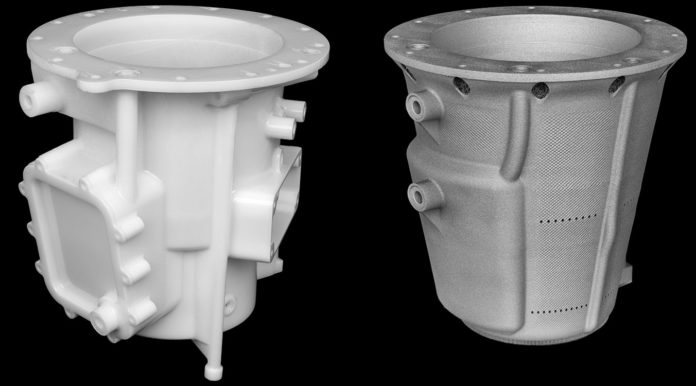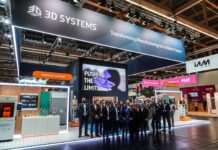An airplane is made up of two major electrical circuits and one alternate circuit. Each of these circuits is placed on each side of the aircraft and linked to a generator. The generator produces electricity, using the mechanical energy supplied by one of the engines hence the term “electric power generation”.
Although generators are the main source of aircraft power, multiple additional sources on an aircraft remain essential for redundancy. That’s why aircraft manufacturers always need to work on a number of new technologies, including fuel cells, super capacitors, high-energy, high-power-density and lithium-ion battery systems.
In order to improve their usage, these electrical systems require a design that could fit the latest developments in both fixed and rotary wing aircraft. That’s where AM comes into play.
In this dossier, we will share the example of Safran Electrical & Power, an aerospace specialist that designs and produces electrical systems for commercial and military aircraft.
The Power Division 3D printing
The 3D printing team from Safran Electrical & Power wanted to improve the design of an electrical generator housing. By leveraging the technical advantages of 3D printing, Betatype, a company that pushes the boundaries of part design and manufacturing performance in Additive Manufacturing, helps Safran’s team to improve the design of the housing by focusing on a number of key areas: improved strength, increased stiffness and a reduction in overall weight.
A proof of concept was therefore developed using an ultra-high density lattice as part of a sandwich structure with over 10 million elements. Betatype CEO, Sarat Babu explained regarding this solution, “We knew creating a more complex, higher density lattice structure was the key to achieving what Safran was looking for in the part. Applying our technology and multi-scale approach, we were able to control the scan path and exposure settings down to each element of the sandwich structure’s design. By pushing laser powder bed fusion well beyond its standard processes, we created the ultra-high-density lattice structure required.”
Betaype’s proof of concept proved a success. It optimised Safran’s generator housing designs for AM, unifying the design from several complex machined components into one part. Betatype were able to dramatically reduce the overall part count and manufacturing times – adding value and saving costs.
Later on, Safran and Betatype included Betatype’s specialized, scalable Process Control technology in the next designs they developed. If nothing is said about that technology, we know that the design unveiled a weight reduction of 30% compared with the previous iteration as well as a reduction in material usage and material waste.
According to the team, “a further reduction — again 30% — in build times was also achieved. Scan path optimization and precise process control that could not be achieved with the standard AM software, were the main contributing factors in speeding up the build process and significantly increased productivity” Lastly, “the latest iteration of the part saw the team switch from the sandwich panel to external ribbing. This reduced the profile volume, while maintaining the required stiffness and enabled the parts to be produced in Aluminium, rather than Titanium.”
Remember, you can post free of charge job opportunities in the AM Industry on 3D ADEPT Media or look for a job via our job board. Make sure to follow us on our social networks and subscribe to our weekly newsletter : Facebook, Twitter, LinkedIn & Instagram ! If you want to be featured in the next issue of our digital magazine or if you hear a story that needs to be heard, make sure to send it to contact@3dadept.com.






